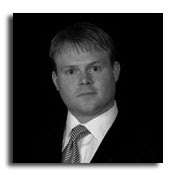"He with a full cup cannot drink from the better wine." -- Chinese Proverb
Our office continually educates individuals on better ways to structure their portfolios for long-term financial success. We do this by removing as much volatility as possible and increasing the certainty of returns by using more alternative investments.
When I talk to people who are "sophisticated" investors, who know all about P/E ratios, correlation co-efficients, increased alpha, derivatives and other "important" measures, I have the most difficult time explaining the simple concept of alternatives. That is because "sophisticated" investors have a cup of knowledge that is very full. Unfortunately, few individual investors have mastered the basic information about investing. The ratios and pie charts are clouding the whole reason why we invest.
In retirement, we invest for future security and income. These are two things that should not be gambled with in my opinion. I have the "luxury" of being able to work for many more years, but retirees are posed with a completely different problem. What happens if the stock market has another ten years just like the most recent ten? The market has not even kept up with inflation - that spells trouble when it comes to income. And the volatility over the past ten years has removed all sense of security for any investors. So this seems to indicate that the equity markets are not good investment choices for retirees.
Our offices subscribe to the Rule of 100, which tells investors to subtract their current age from the number 100; the remainder is the only percentage amount of the portfolio that should be at risk. For example, take a 66 year old retiree : 100 - 66yrs old = 34%. This means that she should have at least 66% of her portfolio secured and a maximum of 34% in volatile/risk based assets. If she is less risky, then she could have a higher percentage in secured investments and less in the volatile basket. This provides stability and future security.
Why do we like alternatives to the traditional assets of stocks, bonds and cash. To start off, the idea that asset allocation should only involve stocks, bonds and cash came from the Nobel Prize winner Harry Markowitz in 1952. His work became known as Modern Portfolio Theory (MPT). But his studies never included some of the world's greatest assets, including the asset class that has created more millionaires that any other class - real estate. Now, I'm not talking about the crazy real estate market that is imploding right now. I'm talking about the land underneath every McDonald's, which has made Mickey D's the world's second largest landholder (second only to the Catholic Church). Or the buildings that the Federal Government or FBI leases for operations. These types of real estate are owned by individuals just like you.
Other high profile alternative investments could include owning the Walmart building, HCA nursing home or the Lowe's and Home Depot buildings and have them pay you rent. Everyday investors have these opportunities at their fingertips. Do you? Yes! Do your homework and learn from the Yale University Endowment, which has nearly 84% of it's own money in alternatives. They have done remarkably well with their portfolio (if you think 17.2% is good!). They are smart enough to secure and grow their portfolio; can you be smart enough to follow their lead?
We focus our investors on the alternatives that are fully collateralized and secured by real assets that produce real income. An example would be to take the failed company Enron. When Enron went bankrupt the stock holders got nothing back; the preferred stock holders got nothing back; the general obligation bond holders got nothing back; the only people that got their money back were the smart investors that owned bonds secured by the real assets of Enron, like the physical pipelines and property. Now that is security! They got money back from a bankrupt company!
Recently Barclays just bought Lehman Brothers after Lehman failed. Barclays paid $1.8 billion dollars for Lehman, and $1.3 billion of it was specifically for the real properties, real assets, and real equipment. So what type of investor do you want to be? The type that owned Lehman stock, or the smart investor that owned the real assets (which are considered alternative investments) and got paid back? Every day you have the ability to make that choice.
If you have questions about alternatives, please contact me. And be sure your cup of knowledge is not too full to drink the better wine!
Subscribe to:
Post Comments (Atom)




No comments:
Post a Comment